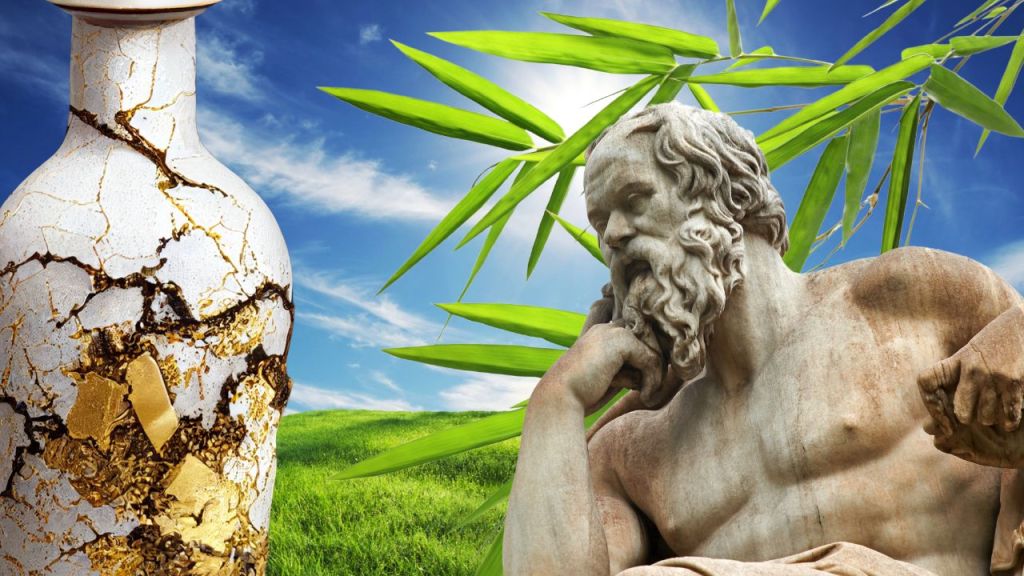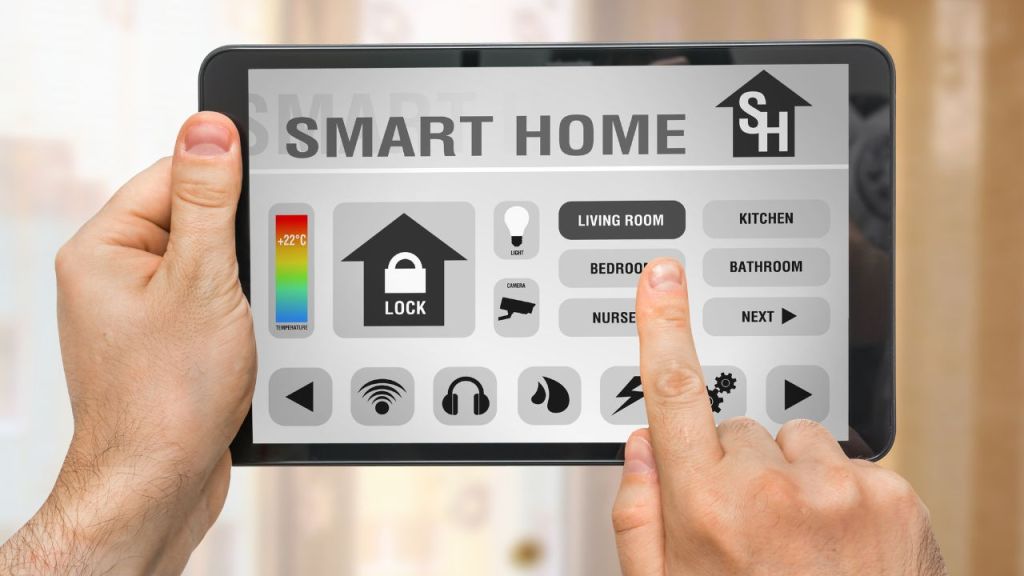A major component in the quest for a more sustainable plastic solution lies in whether or not bioplastics are a viable alternative. The choice between plastics and bioplastics depends on various factors, such as the intended use of the material, the environmental impact of production, and the end-of-life disposal options.
While bioplastics offer some benefits over traditional plastics, they are not a silver bullet solution to the plastic pollution problem. A combination of strategies, including reduction, reuse, and recycling, is needed to address this issue.
What Is Bioplastic?
Bioplastic is a type of plastic that is made from renewable biomass sources, such as corn starch, sugarcane, or vegetable fats and oils, rather than petroleum-based chemicals. Bioplastics can be either biodegradable or non-biodegradable, depending on their composition and production process.
Biodegradable bioplastics are made to spontaneously decompose in the environment, usually through microbial action, into organic substances like compost, water, and carbon dioxide. They are frequently utilized in situations where a brief lifespan is desired, such as in agricultural films or single-use food packaging. It is crucial to remember that not all biodegradable bioplastics will dissolve in all settings and circumstances; some may need certain composting circumstances in order to disintegrate adequately.
Bioplastics are an emerging field with the potential to reduce our reliance on petroleum-based plastics and contribute to a more sustainable future. However, it is important to consider the full lifecycle of bioplastics, including their production, disposal, and potential impacts on the environment and society.

A Brief History of Biodegradable Plastic
Early in the 20th century, scientists started experimenting with employing plant-based ingredients to make plastics, which is when the history of bioplastics began.
One of the earliest pioneers in the field of bioplastics was the American chemist Leo Baekeland, who developed Bakelite, the first synthetic plastic, in 1907. Bakelite was made from phenol and formaldehyde and was widely used in the manufacture of various consumer products throughout the early 20th century.
In the 1920s and 1930s, researchers began experimenting with using cellulose, a natural polymer found in plants, to create plastics. However, it was not until the 1970s that bioplastics began to gain wider acceptance as concerns about the environmental impact of petroleum-based plastics grew.
One of the first commercially successful bioplastics was polylactic acid (PLA), which was developed in the 1980s by the American chemical company Cargill. PLA is made from corn starch and is widely used today in manufacturing food packaging, disposable cups and utensils, and other products.
How Are Bioplastics Made?
Unlike conventional plastics, which are formed of synthetic components, biodegradable plastics are manufactured from natural substances like cornstarch, vegetable fats, oils, or pea starch. Making biodegradable plastics entails a number of steps, including
- Step #1 – Raw Material Selection: Natural materials, such as cornstarch or vegetable fats and oils, are chosen based on their availability, cost, and their ability to break down in the environment.
- Step #2 – Polymerization: The raw materials are then subjected to a process called polymerization, where long chains of molecules are formed. The resulting polymer is then melted and formed into a specific shape or molded into a product.
- Step #3 – Additives: Biodegradable plastics often include additives to enhance their properties, such as flexibility, durability, and heat resistance. These additives can be natural or synthetic, depending on the specific properties desired.
- Step #4 – Biodegradation: The final step is to ensure that the plastic can biodegrade in the environment. This is achieved through the addition of microbial agents, which break down the plastic into natural compounds such as water, carbon dioxide, and organic matter.
Generally, the production of biodegradable plastics is similar to that of conventional plastics, but with the inclusion of steps to ensure the material can decompose in the environment.
What Is Plastic?
Plastic is a synthetic, non-natural material made from polymers–large molecules composed of repeating subunits called monomers. It’s a versatile and lightweight material that can be easily molded into various shapes and forms, making it useful in a wide range of applications, including packaging, construction, transportation, electronics, and healthcare, among others.
Plastic can take hundreds of years to decompose in the environment, leading to significant environmental problems, such as pollution and harm to wildlife. As a result, there’s growing interest in developing more sustainable alternatives to traditional plastic, such as biodegradable and compostable plastics, as well as exploring ways to reduce plastic waste and improve recycling efforts.
Pros & Cons of Bioplastics
In many ways, bioplastics offer a more sustainable alternative to traditional plastics, helping to reduce environmental impact and promote a circular economy. However, it’s important to note that bioplastics also have some limitations, such as high production costs, limited scalability, and challenges regarding waste management and infrastructure.
Here are the pros and cons of bioplastics.
| Pros | Cons |
| Biodegradability | High Cost |
| Reduced Carbon Footprint | Limited Availability |
| Versatility | Land Use |
| Reduced Dependence on Fossil Fuels | Energy-Intensive Production |
What Are Some Types of Biodegradable Plastics?
Bioplastics come in various forms, each with unique characteristics and applications. The following are a few of the most popular kinds of bioplastics:
Polylactic Acid (PLA)
Polylactic acid (PLA) is a type of biodegradable polymer made from renewable resources such as corn starch or sugarcane. It is a thermoplastic material that can be easily molded into various shapes and forms, similar to traditional plastics. PLA is a popular material for various applications, including packaging, disposable tableware, and 3D printing.
PLA is biodegradable and compostable, meaning it can decompose into natural materials under specific circumstances like high temperatures and humidity. This makes PLA a more environmentally acceptable substitute for conventional petroleum-based polymers, which can take hundreds of years to disintegrate in the environment.
The environmental benefits of PLA depend on how it is produced and disposed of. For example, if PLA is not disposed of properly, it may not break down as intended and could still contribute to plastic pollution.
Additionally, the production of PLA requires energy and resources, so it’s important to consider the full life cycle of PLA when assessing its environmental impact.
Polyhydroxyalkanoates (PHAs)
Polyhydroxyalkanoates (PHAs) are a type of biodegradable polymer that can be produced by microorganisms, such as bacteria and algae, using renewable resources. PHAs are versatile materials that can be used in a wide range of applications, including packaging, medical devices, and consumer products.
PHAs can also be tailored to have different physical and chemical properties depending on the intended use. For example, PHAs can be rigid or flexible, transparent or opaque, and water-resistant or water-soluble.
However, there are some challenges associated with the production and use of PHAs. It can be an expensive and energy-intensive process, and there are currently limited commercial sources of PHAs.
The properties of PHAs can also vary depending on the specific microorganism used to produce them, which can make it difficult to ensure consistent quality and performance. But despite these challenges, PHAs hold promise as a more sustainable alternative to traditional plastics in various applications.
Polybutylene Succinate (PBS)
Polybutylene succinate (PBS) is a biodegradable polymer that is derived from renewable resources, such as corn starch or sugar beet. It’s a type of polymer that can be used in various applications, including packaging, agriculture, and textiles.
PBS also has good thermal and mechanical properties, making it suitable for various applications. For instance, PBS can be used in films, injection molding, and extrusion processes.
Contrarily, there are some challenges associated with the use of PBS. Like other biodegradable plastics, PBS requires specific conditions to biodegrade and may not break down as intended if not disposed of properly. The production of PBS also requires energy and resources and may compete with food production if crops are used as feedstock.
Starch-Based Plastics
Starch-based plastics are a type of biodegradable polymer made from renewable resources, such as corn, potato, or tapioca starch.
Starch-based plastics production uses methods similar to those used for traditional plastics, such as injection molding and extrusion. They are used in a wide range of applications, including packaging, disposable cutlery, and bags.
However, there are some difficulties associated with the use of starch-based plastics. Starch-based plastics have a limited shelf life, which can challenge manufacturers and retailers. This is because they can degrade over time due to exposure to heat, moisture, and light.
Furthermore, starch-based plastics typically require specific disposal conditions to biodegrade, such as high temperature and humidity. This means they must be composted in specialized facilities and cannot be disposed of in regular landfills.
Additional research and development are needed to address some of these challenges and improve the performance and sustainability of starch-based plastics.
Cellulose-Based Plastics
Cellulose-based plastics are a type of biodegradable polymer that is made from cellulose–the main component of plant cell walls.
Cellulose-based plastics have some distinctive features that make them different from other types of biodegradable plastics and traditional petroleum-based plastics. This type of bioplastic is made from renewable resources, such as wood pulp, cotton, and hemp. This means that they can be produced using materials that can be replenished, unlike petroleum-based plastics that rely on fossil fuels.
Furthermore, cellulose-based plastics can have comparable strength and durability to traditional plastics, depending on the processing and blending methods used. This makes them suitable for use in applications that require high durability and strength.
And while cellulose-based plastics offer several benefits, they also have some distinctive drawbacks that you should consider. This type of bioplastic has limited barrier properties, so it may not provide as much protection as traditional plastics. This limits their use in some applications, such as food packaging.
Cellulose-based plastics are also more expensive to produce than traditional plastics due to the cost of raw materials and processing methods. Its sensitivity to moisture is another significant disadvantage. This vulnerability affects its properties, leading to degradation over time–meaning it needs to be stored carefully to maintain its quality and performance.
So, it’s relatively clear that the drawbacks of cellulose-based plastics need to be carefully considered and balanced against their benefits when choosing them as an alternative to traditional plastics.

Bioplastic Classifications
As we’ve learned, bioplastics are a diverse group of materials that are derived from renewable biomass sources and/or biodegradable polymers. As such, they are typically classified based on different criteria, such as source materials, manufacturing process, and end-of-life properties.
Fully Biodegradable
Fully biodegradable bioplastics are a type of bioplastic that is designed to break down completely into natural substances through the action of microorganisms. Bioplastics are made from renewable resources such as corn starch, sugarcane, or vegetable fats and oils and are often touted as a more sustainable alternative to traditional plastics made from fossil fuels.
To be classified as fully biodegradable, bioplastics must meet certain criteria.
- Fully biodegradable plastics must be able to break down completely into natural substances such as carbon dioxide, water, and biomass within a specific timeframe. The timeframe for biodegradation varies depending on the specific bioplastic and the conditions under which it is exposed to microorganisms. However, most fully biodegradable bioplastics can biodegrade within six months to two years.
- Fully biodegradable plastics must not leave behind any toxic residue or microplastics that could harm the environment or human health. Fully biodegradable bioplastics must meet strict standards for toxicity and biodegradation set by organizations such as the European Bioplastics Association (EBA) or the American Society for Testing and Materials (ASTM).
Moderately Biodegradable
The term “moderately biodegradable” is not a well-defined or standardized classification for biodegradable materials. There are no universally accepted criteria or standards for what qualifies as moderately biodegradable.
That being said, in general, moderately biodegradable materials are those that partially break down into smaller fragments or residues but not completely into natural substances like carbon dioxide, water, and biomass, within a reasonable time frame under specific environmental conditions.
Unlike fully biodegradable materials, which must meet strict standards for biodegradation and toxicity, moderately biodegradable materials do not have clearly defined criteria or requirements. However, they may still provide some benefits over traditional non-biodegradable plastics, such as reduced waste and decreased environmental impact.
It’s important to note that while the term “moderately biodegradable” may be used by some manufacturers or marketers of biodegradable materials, it is not recognized or regulated by any official organizations or agencies, and its use may be subjective or misleading. It’s always a good idea to carefully research and verify claims about any materials or products’ biodegradability and environmental impact.
What Are Some Biodegradable Plastic Products?
Bioplastics are increasingly being used to create a wide range of products, from everyday household items to industrial and medical applications. Here are a few popular products that are made with bioplastics:
- Straws – Biodegradable straws made from plant-based materials like corn starch or PLA are now widely available as a more sustainable alternative to traditional plastic straws.
- Food Packaging – Bioplastics are being used to create various food packaging products, such as takeout containers, clamshells, and wrap films. These products are typically compostable or biodegradable and are made from materials like PLA or sugar cane.
- Cutlery – Biodegradable cutlery made from plant-based materials like corn starch or wheat bran is a sustainable alternative to traditional plastic cutlery.
- Water Bottles – Biodegradable water bottles made from materials like PLA or PHA are available as a more eco-friendly alternative to traditional plastic water bottles.
- Medical Implants – Bioplastics are being used to create medical implants, such as sutures, that can degrade over time within the body, reducing the need for additional surgeries to remove them.
- 3D Printing Filaments – Biodegradable 3D printing filaments made from PLA, PHA, or other bioplastics are available, offering a more sustainable alternative to traditional 3D printing materials.
- Fishing Nets – Biodegradable fishing nets made from PHA or other bioplastics are an emerging sustainable alternative to traditional nylon fishing nets, which can harm marine life and take hundreds of years to degrade.
- Phone Cases – Biodegradable phone cases made from plant-based materials like corn starch or flax are available as a sustainable alternative to traditional plastic phone cases.
- Eyeglasses – Biodegradable eyeglasses made from a combination of PLA and wood pulp or flax are an eco-friendly alternative to traditional plastic eyeglasses.
- Musical Instruments – Bioplastics are being used to create musical instruments, such as guitars and violins. These instruments are lightweight, durable, and offer a more sustainable alternative to traditional materials like wood and synthetic plastic.
These are just a few examples of the many bioplastic products that can be made. As awareness of the environmental impact of plastic waste grows, we can expect to see more innovative and sustainable products emerging in the future.

What Are Some Other Uses of Bioplastics?
While bioplastics are already being used in various industries, there are still many potential applications that are yet to be explored. Here are some ideas for more uncommon uses of bioplastics
- Textiles: Bioplastics can be used to create fabrics and textiles, which can be used in clothing, upholstery, and other applications. These materials are often biodegradable and compostable, reducing their environmental impact.
- Agriculture: Bioplastics can be used in agriculture for various applications such as seedling trays, mulch films, and irrigation tubing. These materials are designed to biodegrade over time, reducing waste and environmental impact.
- Electronics: Bioplastics can be used in electronics manufacturing for applications such as circuit boards and casings. These materials are often more sustainable than traditional plastics and can be designed to biodegrade over time.
- Building Materials: Bioplastics can be used to create a range of building materials, including insulation, roofing, and siding. These materials are often more sustainable than traditional building materials and can help reduce the environmental impact of construction.
As you can see, the potential uses of bioplastics are vast and varied, and as technology advances, we may discover even more innovative and uncommon applications for this sustainable material.
Is Bioplastic Compostable?
Not all bioplastics are compostable. Compostable bioplastics will break down quickly in composting conditions and turn into compost, which can be used as a natural fertilizer. These materials are made from renewable resources such as corn starch, sugarcane, and potato starch and are biodegradable and compostable under the right conditions.
It’s also important to follow proper composting guidelines when disposing of compostable bioplastics. These materials need specific conditions to break down properly, including the right temperature, moisture, and oxygen levels. Composting facilities that accept compostable bioplastics should be certified by the appropriate organizations to ensure that they are following the proper guidelines for composting these materials.
If you want to use bioplastics for their compostable properties, make sure you choose compostable bioplastics that are certified by the appropriate organizations and follow proper composting guidelines when disposing of them.

Is Bioplastic Packaging Recyclable?
Bioplastic packaging may or may not be recyclable, depending on the specific type of bioplastic and the recycling facilities available in your area.
Some types of bioplastics, such as PLA (polylactic acid), can be recycled in certain recycling programs that accept them. However, these materials need to be separated from other types of plastics, as they have different properties and require different recycling processes.
Other types of bioplastics may not be recyclable, as they may not be compatible with existing recycling infrastructure or may not be cost-effective to recycle. In some cases, bioplastics that are not recyclable can be composted, reducing their environmental impact.
It’s important to check with your local recycling program to determine whether bioplastics are accepted and, if so, which types of bioplastics are accepted. If bioplastics are not accepted, it’s best to dispose of them in the appropriate waste stream or compost them if possible.
Are Bioplastics More Eco-Friendly?
Bioplastics have the potential to be more eco-friendly than traditional petroleum-based plastics, but it depends on various factors and specific applications.
The fact that bioplastics are produced using renewable resources like corn, sugarcane, or potato starch lessens our reliance on finite resources and is one of their key advantages. Also, because the production process emits fewer greenhouse gas emissions than those of typical plastics, bioplastics may have a lower carbon footprint than those materials.
Bioplastics also have the advantage of being compostable or biodegradable, which lessens the quantity of plastic waste that ends up in landfills and seas. It’s crucial to remember that not all bioplastics are compostable or biodegradable, and some may still need to be disposed of properly to prevent environmental damage.
Despite these benefits, bioplastics still face some challenges that must be addressed. For example, some types of bioplastics may require significant amounts of energy and resources to produce, which can negate the environmental benefits. Additionally, the production of bioplastics may compete with food production, which could negatively impact food security.
Overall, while bioplastics have the potential to be more eco-friendly than traditional plastics, it depends on various factors such as the type of bioplastic and its specific application. Careful consideration and evaluation of the environmental impact of bioplastics are necessary to ensure that they are indeed a more sustainable alternative to traditional plastics.
What Are the Problems With Biodegradable Plastics?
Although biodegradable plastics offer some advantages over traditional petroleum-based plastics, they also have some primary problems that need to be considered:
- Lack of Consistency: The biodegradation process of biodegradable plastics depends on various factors such as temperature, moisture, and oxygen levels. In some cases, these conditions may not be present, leading to slow or incomplete degradation.
- Contamination: Biodegradable plastics may contaminate other recycling streams or composting facilities, causing problems for waste management. For example, if biodegradable plastics are mixed with traditional plastics, the resulting material may not be recyclable or may require a more complicated and costly recycling process.
- Greenhouse Gas Emissions: The production of biodegradable plastics can generate greenhouse gas emissions, depending on the type of feedstock used and the production process. This can offset some of the environmental benefits of biodegradable plastics.
- Cost: Biodegradable plastics can be more expensive than traditional plastics, which can limit their adoption in some applications. Additionally, the cost of biodegradable plastics may vary depending on factors such as availability of feedstock, production volume, and technology.
- Misleading Claims: Some biodegradable plastics may be marketed as more environmentally friendly than they actually are, leading to confusion among consumers and potential harm to the environment if these materials are not disposed of properly.
Ultimately, there are certainly major issues with biodegradable plastics that should be taken into account, including inconsistent biodegradation, possible contamination, greenhouse gas emissions, cost, and false advertising. These issues need to be addressed to ensure that biodegradable plastics are indeed a more sustainable alternative to traditional plastics.

How Do Bioplastics Get Disposed Of?
The disposal of bioplastics depends on the specific type of bioplastic and its properties. Some bioplastics are designed to be compostable, while others are not. Here are the different ways bioplastics can be disposed of:
- Composting: Some bioplastics are designed to biodegrade under certain conditions, such as high heat and moisture, and can be composted in industrial composting facilities or backyard compost bins. Composting bioplastics can help reduce waste and create nutrient-rich soil.
- Recycling: Some types of bioplastics, such as PLA (polylactic acid), can be recycled in certain recycling programs that accept them. However, these materials need to be separated from other types of plastics, as they have different properties and require different recycling processes.
- Landfills: Bioplastics that are not designed to biodegrade or cannot be composted or recycled may end up in landfills. However, even biodegradable bioplastics may not break down in landfills due to the lack of oxygen and moisture needed for biodegradation.
- Incineration: Bioplastics can also be incinerated, which can generate energy, but this can also produce greenhouse gas emissions and other pollutants.
It’s crucial to remember that not all bioplastics are created equal and call for certain disposal techniques. As a result, it’s critical to consult with nearby waste management facilities to ascertain the best way to get rid of a specific kind of bioplastic. By selecting recyclable and reusable goods whenever possible and appropriately disposing of bioplastics when necessary, consumers may also contribute to the reduction of waste.
Are Bioplastics a Good Alternative To Traditional Plastics?
Bioplastics can be a good alternative to traditional plastics in some cases, but it depends on the specific application and the properties of the bioplastic being used.
One of the main advantages of bioplastics is that they are made from renewable resources rather than fossil fuels. This alone can reduce dependence on non-renewable resources.
Additionally, some types of bioplastics can be biodegradable or compostable, which can reduce the amount of plastic waste in landfills and oceans.
However, bioplastics also have some disadvantages, such as higher production costs, lower durability, and potential environmental impacts from the cultivation of crops used to make bioplastics. Additionally, not all bioplastics are created equal, and some may not be as eco-friendly as they claim to be.
Therefore, it’s important to carefully consider the environmental impact of bioplastics on a case-by-case basis and weigh the advantages and disadvantages of using bioplastics in a particular application. In some cases, bioplastics may be a good alternative to traditional plastics, but in other cases, other solutions, such as reducing plastic consumption, recycling, or using alternative materials, may be more effective.

The Verdict: Bioplastic vs. Plastic
The verdict on whether bioplastic or traditional plastic is the better option is not clear cut, as both materials have their advantages and disadvantages. To recap, here are the main factors to consider when comparing the two:
- Environmental Impact: Bioplastics have a lower carbon footprint and are made from renewable resources, while traditional plastics are made from non-renewable fossil fuels and have a higher carbon footprint. However, the production and disposal of bioplastics can still have environmental impacts, such as land use for crops and contamination of composting facilities.
- Durability: Traditional plastics are more durable than bioplastics, which can be more prone to breaking down or degrading over time. This can be an advantage for some applications where long-lasting materials are needed.
- Cost: Bioplastics are generally more expensive than traditional plastics, which can limit their adoption in some applications.
- Recycling: Traditional plastics are widely recyclable, while bioplastics may require specific recycling facilities or may not be recyclable at all. However, bioplastics can be compostable, which can reduce the amount of plastic waste in landfills and oceans.
- Availability: Traditional plastics are widely used and readily available, while bioplastics may be less commonly used and more difficult to find in some applications.
Overall, the better option between bioplastic and traditional plastic depends on the specific application and the environmental impact of each material. In some cases, bioplastics may be a better option due to their lower carbon footprint and potential for composting, while in other cases, traditional plastics may be more appropriate due to their durability, recyclability, and lower cost.
Ultimately, reducing plastic consumption and using sustainable materials whenever possible is the best way to minimize the environmental impact of plastics.






Leave a comment